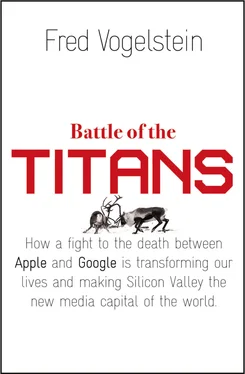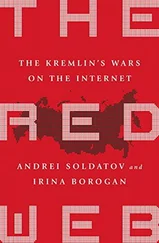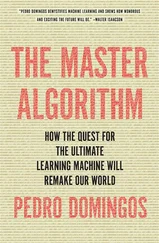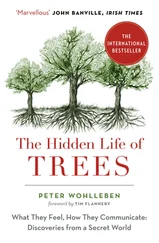None of these kluges fixed the iPhone’s biggest problem: it often ran out of memory and had to be restarted if asked to do more than a handful of tasks at a time. Jobs had a number of demo units onstage with him to manage this problem. If memory ran low on one, he’d switch to another while the first was restarted. But given how many demos Jobs planned, Grignon worried that there were far too many potential points of failure. If disaster didn’t strike during one of the dozen demos, it was sure to happen during Jobs’s grand finale, when Jobs planned to show all the iPhone’s top features operating at the same time on the same phone. He’d play some music, take a call, put it on hold and take another call, find and email a photo to the second caller, look up something on the Internet for the first caller, and then return to his music. “Me and my guys were all so nervous about this. We only had 120 megabytes of memory in those phones, and because they weren’t finished, all these apps were still big and bloated,” Grignon said.
The idea that one of the biggest moments of his career might implode made Grignon’s stomach hurt. At forty, Grignon looks like the kind of guy you’d want to drink with—and he is. When he moved from Campbell to Half Moon Bay in 2010, he quickly became friendly with the sommelier at the Ritz-Carlton Hotel. He even had a wine fridge in his office. But behind that gregarious exterior is a fierce intellect and an ultracompetitive streak. Once when trying to get to the bottom of a slew of software bugs in an iPhone subcontractor’s equipment, he turned the AC on high in the conference room he used to make the subcontractors uncomfortably cold. When that didn’t get them moving fast enough, he tried a more aggressive approach: he accused them of holding out on him and threw his laptop against the wall.
By 2007 he’d spent virtually his entire fifteen-year career at Apple or companies affiliated with it. While at the University of Iowa in 1993, he and his friend Jeremy Wyld—now cofounder with Grignon of Quake Labs—reprogrammed the Newton MessagePad to wirelessly connect to the Internet. That was quite a feat back then, and it helped them both get jobs at Apple right out of school. Wyld actually worked on the Newton team, and Grignon worked in Apple’s famous R & D lab—the Advanced Technology Group—on video conferencing technology. Even though the Newton did not succeed as a product, many still think of it as the first mainstream handheld computer. But by 2000 Grignon had found his way to Pixo, a company spun out of Apple that was building operating systems for cell phones and other small devices. When Pixo’s software found its way into the first iPod in 2002, Grignon found himself back at Apple again.
By then, thanks to his work at Pixo, he’d become well known for two other areas of expertise besides building video conferencing technology: computer radio transmitters (what we now call wireless) and the workings of software inside small handheld devices such as cell phones. Grignon works in an entirely different world from that inhabited by most software engineers in the Valley. Most rarely have to think about whether their code takes up too much space on a hard drive or overloads a chip’s abilities. Hardware on desktop and laptop computers is both powerful, modifiable, and cheap. Memory, hard drives, even processors, can be upgraded inexpensively, and computers are either connected to electric outlets or giant batteries. In Grignon’s world of embedded software, the hardware is fixed. Code that is too big won’t run. Meanwhile, a tiny battery—which might power a laptop for a couple of minutes—needs enough juice to last all day. When Jobs decided to build the iPhone at the end of 2004, Grignon had a perfect set of skills to become one of the early engineers on the project.
Now, in 2007, he was emotionally exhausted. He’d gained fifty pounds. He’d stressed his marriage. It had been a grueling two years. Apple had never built a phone before, and the iPhone team quickly discovered the process didn’t resemble building computers or iPods at all. “It was very dramatic,” Grignon said. “It had been drilled into everyone’s head that this was the next big thing to come out of Apple. So you put all these supersmart people with huge egos into very tight, confined quarters, with that kind of pressure, and crazy stuff starts to happen.”
The iPhone didn’t start out as Apple’s “next big thing.” Jobs had to be talked into building a phone. It had been a topic of conversation among his inner circle almost from the moment Apple launched the iPod in 2001. The conceptual reasoning was obvious: Why would consumers carry two or three devices for email, phone calls, and music when they could carry one?
But every time Jobs and his executives examined the idea in detail, it seemed like a suicide mission. Phone chips and bandwidth were too slow for anyone to want to surf the Internet and download music or video over a cell phone connection. Email was a fine function to add to a phone. But Apple couldn’t leverage all the work it had put into building a music player such as the iPod to do that. Research in Motion’s BlackBerry was fast locking up that market, anyway. Apple even considerd buying Motorola in 2003, but executives quickly concluded it would be too big an acquisition for the company then.
Worst of all 10, if Apple wanted to make and sell a phone in the United States, it would be at the beck and call of the U.S. wireless carriers. Back then, phone manufacturers such as Motorola were the serfs of high tech in the United States. They depended on carriers’ marketing dollars to get consumers into stores, and then they depended on carriers to make the phones affordable by subsidizing their purchase price. That made manufacturers powerless to resist carriers’ meddling in how each phone should be built. Manufacturers occasionally pushed back against this dominance and were always met with the same response from the carriers: “You can build the phone your way, but we might not subsidize it, market it, or allow it on our network.” Manufacturers always caved in the face of this threat.
Jobs was personally offended 11by this way of doing business and wanted no part of it. “We’re not the greatest at selling to the Fortune 500, and there are five hundred of them—five hundred CIOs [chief information officers] that are orifices you have to go through to get” that business. “In the cell phone business there are five. We don’t even like dealing with five hundred companies. We’d rather run an ad for millions and let everyone make up their own mind. You can imagine what we thought about dealing with five,” he said during an onstage interview at the All Things D conference in May 2003. Translation: I am not about to spend hundreds of millions of dollars to have a bunch of suits tell me how to build and sell my phone.
That sounded tough and principled. But by the end of 2003, as the iPod became Apple’s most important product since the Macintosh, it was also starting to look misguided. Cell phone makers were putting music-listening applications in their phones. And companies such as Amazon, Walmart, and Yahoo! were beginning to sell downloadable music. Executives such as iPod boss Tony Fadell worried that if consumers suddenly gave up their iPods for music phones, Apple’s business—only five years removed from its flirt with bankruptcy—would be crushed. “We didn’t really have a hit on our hands [with the iPod] until late 2003, early 2004, so we were saying maybe we don’t have the market domination—the retail channels—to expand the iPod’s business properly,” Fadell said.
It’s hard to imagine 12a time when the iPod wasn’t an iconic product, selling more than 50 million units a year; but back then Apple had sold only 1.3 million devices in two years and was still having trouble getting retailers such as Best Buy to carry it. “So we were thinking, ‘How do we get above the noise? How do we make sure that we are at least competitive so that anyone who is carrying a cell phone can get iTunes music?’ Because if we lost iTunes, we would have lost the whole formula,” Fadell said.
Читать дальше












